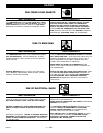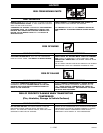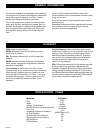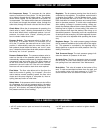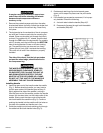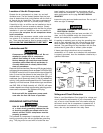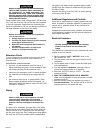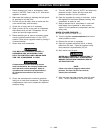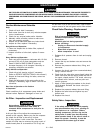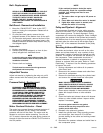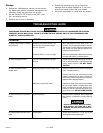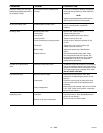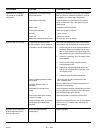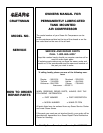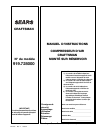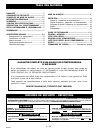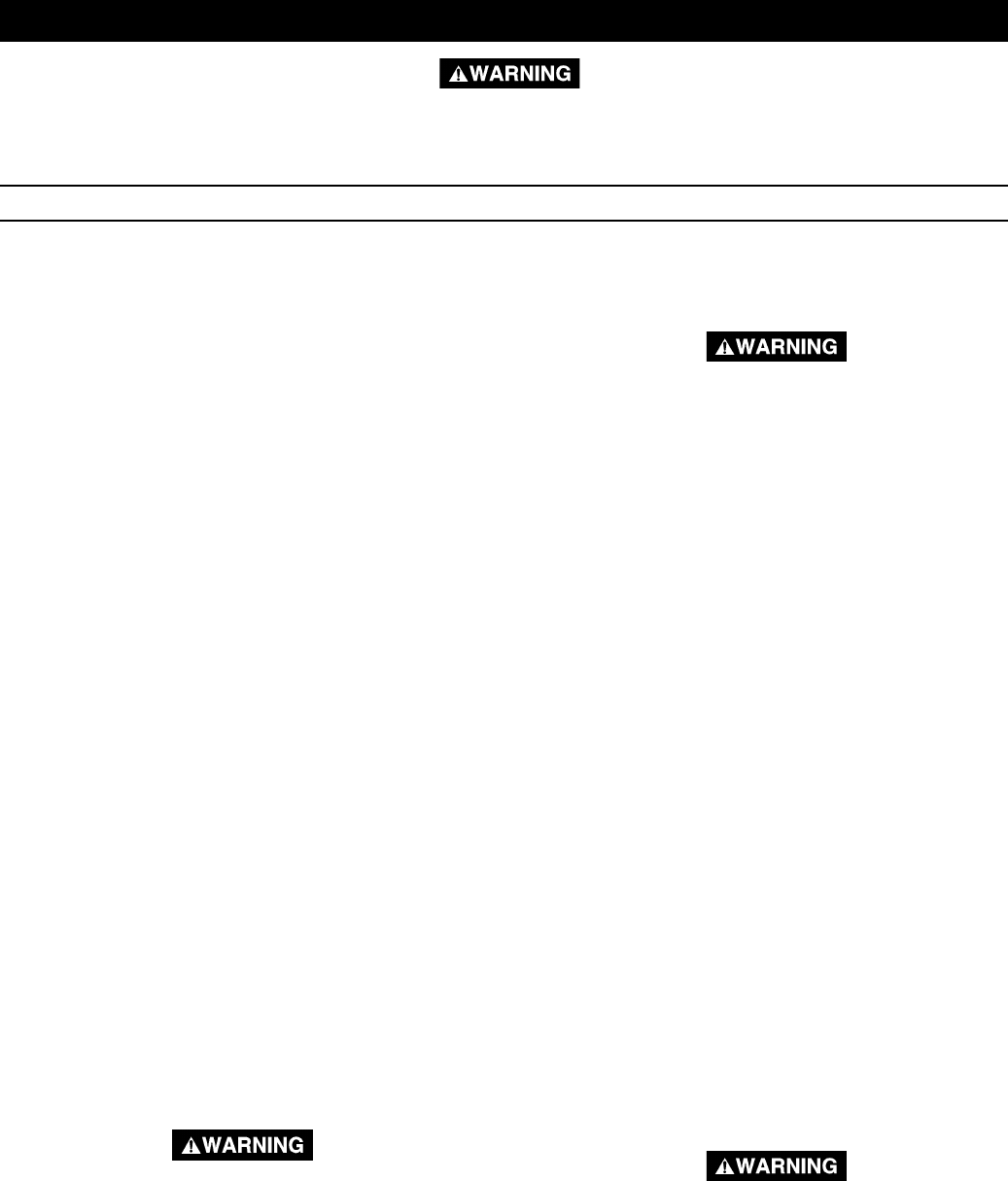
12 — ENG
D21245
ALL MAINTENANCE AND REPAIR OPERATIONS NOT LISTED MUST BE DONE BY A QUALIFIED SERVICE TECHNICIAN.
UNIT CYCLES AUTOMATICALLY WHEN POWER IS ON. WHEN DOING MAINTENANCE, YOU MAY BE EXPOSED TO
VOLTAGE SOURCES, COMPRESSED AIR OR MOVING PARTS. PERSONAL INJURIES CAN OCCUR. BEFORE
PERFORMING ANY MAINTENANCE OR REPAIR, UNPLUG THE COMPRESSOR AND BLEED OFF ALL AIR PRES-
SURE.
MAINTENANCE
Air Filter - Inspection and Replacement
Hot surfaces. Risk of burn. Compressor
heads are exposed when filter cover is
removed. Allow compressor to cool prior to
servicing.
A dirty air filter will not allow the compressor to
operate at full capacity. Before you use the compres-
sor, check the air filter to be sure it is clean.
If it is dirty, replace it with a new filter. On some
models, the filter may be removed by using a pair of
needle nosed pliers or a screwdriver. Pull or pry out
Safety Valve - Inspection
If the safety valve does not work properly,
over-pressurization may occur, causing air
tank rupture or an explosion. Before
starting compressor, pull the ring on the
safety valve to make sure that the safety
valve operates freely. If the valve is stuck or
does not operate smoothly, it must be
replaced with the same type of valve.
Routine Maintenance Schedule
Daily:
1. Check oil level. Add if necessary.
2. Drain water from the air tank, any moisture separa-
tors or transformers.
3. Check for any unusual noise and/or vibration.
4. Manually check all safety valves to make sure
they are operating properly.
5. Inspect for oil leaks and repair any leaks found.
6. Inspect air filter, replace if necessary.
Every 40 Hours of Operation:
1. Clean and inspect the air intake filter; replace if
necesssary.
2. Inspect condition of drive belt; replace if neces-
sary.
Every 100 Hours of Operation:
1. Drain and refill compressor crankcase with 16 fluid
ounces (473.2 ml) of clean compressor such as
Sears 9-16426 or SAE 20-20W SF motor oil
2. Increase frequency of oil changes if humidity or
operating conditions are extreme.
Every 160 Hours of Operation:
1. Check drive belt tension; adjust if necessary.
(Refer to SERVICE INSTRUCTIONS in this manual.)
2. Inspect air lines and fittings for leaks; correct as
necessary.
3. Check the alignment of the motor pulley to the
flywheel. If necessary, align to within 1/32 inch on
centerline.
Each Year of Operation or if a Problem
is Suspected:
Check condition of air compressor pump intake and
exhaust valves. Replace if damaged or worn out.
the old filter. Push in the new air filter. Other models
require removal of the belt guard and/or filter retainer.
Check Valve Cleaning - Replacement
Risk of personal injury. Manifold assembly
contains compressed air which can be
hazardous.
Manifold gets hot during operation.
Before servicing:
• Unplug or disconnect electrical supply
to compressor.
• Bleed tank of pressure.
• Allow compressor to cool.
1. Release all air pressure from air tank and unplug
outfit.
2. Remove shroud.
3. Loosen the top and bottom nuts and remove the
outlet tube.
4. Remove the pressure release tube, fitting, and
connector.
5. Unscrew the check valve (turn counterclockwise)
using a socket wrench.
6. Check that the valve disc moves freely inside the
check valve and that the spring holds the disc in
the upper, closed position. The check valve may
be cleaned with a solvent, such as paint and
varnish remover.
7. Apply a Teflon based pipe sealant to the check
valve threads. Reinstall the check valve (turn
clockwise).
8. Replace the pressure release tube and fitting.
9. Replace the outlet tube and tighten top and
bottom nuts.
10. Replace the shroud.



